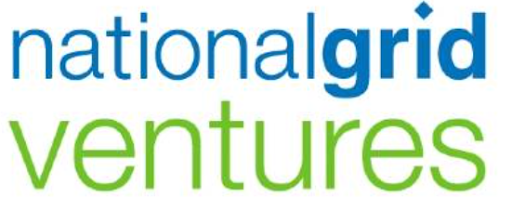Federal and Not-for-Profit Grant Projects
The Advanced Energy Research and Technology Center is engaged in a variety of projects with our federal and non-profit partners partners, including The U.S Department of Energy, National Grid Ventures, and NYSERDA
View our federal and non-profit grant projects below.
Principal Investigator: Dr. David Hwang (SBU)
Funding Source: US Department of Energy and Free Form Fibers LLCThis project aims to improve the laser chemical vapor deposition (CVD) process as a promising route to the production of high-quality SiC feedstocks and, thereby, high-quality SiC wafers. This work is in collaboration with Free Form Fibers (FFF), a small business located in Saratoga Springs, New York, in response to the U.S. Department of Energy's (DOE) Office of Energy Efficiency and Renewable Energy's (EERE) Critical Materials Accelerator. AERTC/SBU leverage existing laboratory facilities, equipment, and expertise to conduct experiments designed to raise the technical readiness of the FFF's process.
Principal Investigator: Dr. Peter Donnelly (SBU)
Funding Source: US Department of Energy
The Advanced Energy Research and Technology Center (AERTC), in partnership with the Center for Integrated Electric Energy Systems (CIEES), proposes to design and fabricate a modular platform for conducting research related to the generation of green hydrogen and development of novel applications. The proposed system will provide a flexible, lab-scale platform for evaluating a wide range of technologies including wind energy generation, solar power, electrolyzing technology, hydrogen storage, fuel cells, battery storage, sustainable fuel combustion, and process integration. This system will address the need for university researchers and industry experts to have access to a facility that can deliver green hydrogen. These capabilities will enable new hydrogen technology research, development of emerging products, and performance optimization for system configuration. The lab-scale system will be designed to integrate with the existing research facilities and equipment located at AERTC. New state of the art components will include one or more small scale wind turbines, an electrolyzer, hydrogen storage, and SCADA system. Multiple connection points, and space, will be provided for connection of ancillary equipment as part of separately funded research projects.
Commercial Application/Potential
This system will serve as a flexible testbed for research and development of various combinations of technologies to optimize the generation, storage and use of hydrogen as an energy carrier, carbon free chemical and fuel. Through collaborative projects with AERTC and CIEES, both start-up and established companies can gain access to the equipment. Research associated with this system will accelerate the inception and development of products and services offered by existing and future companies, ultimately creating significant economic benefit for NY State.
Principal Investigator: Dr. Dimitris Assanis (SBU)
Funding Source: NYSERDA / National Grid Ventures

The goal of this project is for the Advanced Combustion and Energy Systems (ACES) Laboratory to assist National Grid Ventures (NGV) in their evaluation of the Mainspring Energy novel architecture, linear free piston alternator for power generation using hydrogen. PI Assanis and the ACES laboratory will draw on their extensive combustion performance and emission characterization knowledge base to assist NGV in the deployment, instrumentation, characterization, and analysis of this novel reactor system. Specifically ACES laboratory will develop a portable, standalone National Instruments based Data Acquisition System (DAQ) (hardware and software interface) to non-invasively monitor key thermodynamic quantities (system temperatures, system pressures, power generation, etc.) as well as key input and out stream flow rates and compositional constituents. Of key interest on the input flow stream will be non-invasive measurement of incoming airflow as well as volumetric flow rate of hydrogen fuel supplied to the unit. Additionally, the output stream will be non-invasively monitored for emissions characterization and evaluated for acceptable limit compliance using continuous emissions monitoring equipment that will be recorded in a synchronized time-resolved manner with the SBU developed DAQ system. Specific species including unburned hydrogen (H2), nitrogen oxide (NOx) and nitrous oxide (N2O) will be evaluated. N2O is of significant recent interest as it has a long-life span (>100 years) in the atmosphere and also has a very high global warming potential (GWP) that is 273 times that of CO2 for a 100-year timescale. The Mainspring Energy reactor is expected to produce near zero NOx (0-5ppm) during operation. A 0-5ppm/ high range ppb ambient analyzer will be procured to measure the company-stated single digit NOx species. Additionally, a HORIBA HyEVO unit has been selected for unburned hydrogen concentration measurements, HORIBA VA5000 analyzers and sample conditioners have been selected for in-line measurements of O2, N2O, NO, NH3. Traditional CO2, CO, and unburned CH4 (GWP that is 25-30 times that of CO2 for a 100-year time scale) will also be measured to deterministically show that the 100% hydrogen linear generator differs from traditional architecture/design fossil fuel counterparts as it produces zero carbon-based emissions.
Commercial Application/Potential
This project is a real-world validation of the emissions and performance of Mainspring’s linear generator operating on 100% hydrogen fuel in a commercial deployment, with the goal of validating that linear generator are a viable alternative to fuel cells for early hydrogen-fueled emissions-free peaking capacity.
